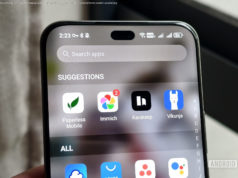Google’s developer conference ongoing, and we have all the latest news and announcements, including the highlights from day one.
Reporting live from Google IO 2018, we have all of the breaking news and product announcements from Google’s big developer conference. Below, you’ll find all of the exciting new advancements from Tuesday’s opening keynote and impressions from our time testing things out on Google IO Day 2
No surprise, a key highlight at Google IO 2018 has been Android P. It’s now become available in a public beta – and on a lot more devices than just Google-branded phones. You may be able to try it out right now.
But this week’s Google IO event has had so many more announcements. It’s not just about Android this time around. Google Maps, Google Assistant and Gmail have new features you’ll want to know about.
Here’s all of the big Google IO news explained.
Google Assistant is becoming smarter – and creepier – with a natural-sounding voice that can make phone call appointments and reservations for you. It’s gotten to the point that it can handle a back-and-forth Q&A when it calls a business.
It’s called Google Duplex, and the company demonstrated this with two recordings of phone calls, which it said were real calls to businesses. It was difficult to tell, though – both the Assistant (the caller) and the business employee (a human) sounded real. Only one was a real person, of course.
The first call was to book a haircut. Assistant was tasked with making and appointment for a haircut within a two-hour window on a specific date. When the business asked about what type of haircut service was needed before times could be given, the Assistant responded, «a woman’s haircut». Right on point. When presented with an alternate time, it was able to confirm the appointment.
What was most convincing about this was Google Assistant added a «Mm-hmmm» when the business employee says, «Okay. Give me one second.» And the tone of voice was so shockingly real, with true-to-life expression. There was also a brief «uhhh» when the Assistant simulated thinking about an answer in the second call.
Google ran the second recorded call starring Assistant and a human, this one for a dinner reservation. The restaurant employee had an accent and a lot of follow-up questions with twists and turns, but Google Assistant was able to navigate the Q&A and respond naturally. The human messed up more than Assistant did.
Alphabet’s Waymo self-driving Jaguar I-Pace car doesn’t look like other autonomous cars, and that’s really important for the future of driverless cars.
We got to see it in person after the Google IO keynote. It’s one of more than 20,000 self-driving Jaguar that Waymo plans to put on roads over the next few years. Okay, it wasn’t powered on and we couldn’t even open the doors, but we did get to peer inside of this $69,500 / £63,495 luxury compact SUV. It’s striking.
Gmail has undergone more change in 2018 than it has in its 14 years of existence,a and it’s about to become even better with a new AI feature.
Smart Compose is going to help you finish your sentences in emails thanks to machine learning. It reminds us of autocorrect, but for whole chunks of sentences, and because Google has so much of your data, it’s bound to be a lot smarter.
Google Maps is the best app ever created, hands-down. It plots our route to work every morning when we’re home, and helps us navigate previously unknown places when we’re visiting a foreign country or taking an unknown road. It’s pretty amazing. But it’s not infallible.
That’s why Google is out to solve the biggest Google Maps annoyance – not knowing where the blue dot is headed. The compass only does so much (and it’s often wrong). The company’s fix? Integrating Google Lens into Google Maps.
Simply point your phone at the street and a StreetView AR overlay will pop up, pointing you in the right direction while also keeping the maps layout at the bottom of the screen. This seems like a well-design fixed for Google Maps.
Here’s the bad news: Google didn’t say when this feature will come to Google Maps, even though it looked near-complete in the Google IO demo. There was no release date attached to this promising technology.
Can you believe we’re up to the No. 5 Google IO highlight and we haven’t even talked about Android P yet? That’s because Maps, Assistant and Gmail were legit exciting.
Google is making the Android P beta more accessible, launching its public beta for Google Pixel phones as well as phones from seven other manufacturers. The new beta is available now on the following handsets:
This is quite a switch, as past Android betas, especially this early, have routinely been limited to Google-branded phones. This should make testing and seeding the final version of Android P even better. That’s expected to happen in August.
Android P is going to be smarter than Android Oreo in four ways. First, it’s becoming better at conserving battery life through what Google calls adaptive battery. This is going help you see a 30% reduction in CPU app wake-ups for apps that the operating system predicts you won’t actually use for the rest of the day.
Google is also getting smarter when it lights up the screen. In addition to taking into account your environment, adaptive brightness is learning your own personal preferences. Google says that half of all Android users are manually adjusting brightness thanks to the machine learning brightness tool.
App actions are ready to predict which app tasks you want to tackle, based on time and circumstance, down to you plugging in your headphones. Searching for the new Avengers movie might suggest the Fandango app to buy movie tickets to this film. In the evening, Google might be ready for your evening run with a Strava workout suggestion.
App slices is an API that’s going to allow developers put parts of their app into various portions of the operating system, starting with search. If you search Lyft, for example, the search dropdown will not only suggest the Lyft app, but also feed you options like Home and Work, along with the price each will cost. You can select the destination right from the search menu. Searching ‘Hawaii’ may present a slice from Google Photos of a recent vacation gallery. Google says it’ll expand this for actions such as playing a video and checking into a hotel.
Android P will have a new system navigation interface in order to make multi-tasking easier to understand, with a single, clean-looking home button. It’s very much an iPhone X horizontal bar to replace the typical home and recent buttons.
This is part of Google’s plan to make the UI simpler and adapt to the all-screen phone designs out there.
You’ll be able to swipe up from the bottom anywhere in the operating system to see recently opened apps, as well as five predicted apps at the bottom of the screen, to save you time. Swipe up a second time (or do one long swipe up) and you’ll see your full app drawer. With this one-two swipe gesture, Google has essentially combined the all-apps and overview spaces gesture into one.
Google IO marked a big change for how we adjust the volume on our smartphone, with the hardware buttons changing up the media volume from the outset. This is for everyone who hates thinking they turned down the volume, only to play a loud video and realize they only turned down the ringer.
Google’s simplified media volume slider will appear on the right side of the screen, where volume buttons are located (makes sense), along with a bell icon to turn the ringer on and off (because you likely only care about it’s on/off state, according to Google).
A small, but exciting change is the fact that you’ll be able to manually control screen orientation thanks to a small pop-up icon that enables you to rotate the screen on your own.
Google is creating a dashboard in Android P to tell you how you’re spending time in apps. YouTube will have total watch time in mobile and desktop to help you understand how and when you spend too much time on your phone.
It’ll even go as far as setting an app timer, letting you know when you get close to and reach a self-imposed limit. These simple nudges may go a long way to helping people put down their phones.
Shush is a new Do Not Disturb mode. Turn your phone on its screen face and you’ll be able to silence your phone, except for emergency calls from starred contacts.
We got to go hands-on with the Google Assistant-powered Smart Displays, like the Lenovo Smart Display at CES 2018. Now we’re going to see them go on sale.
July is when you should look out for the first Google Smart Displays, according to the Google IO announcement. LG, Sony and JBL have smart displays in the works, too.
These screen-touting smart speakers are Google’s answer to the Amazon Echo Show, and they play YouTube videos – something Amazon’s Alexa-powered display can’t do .






